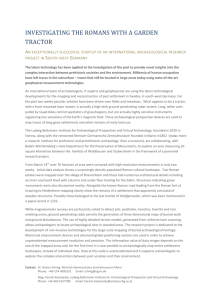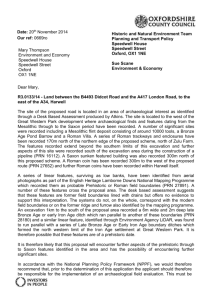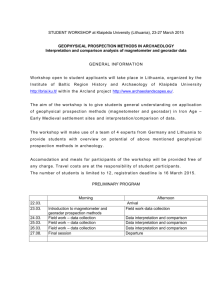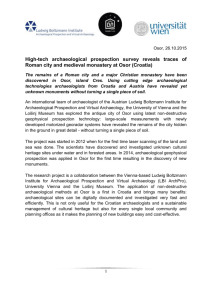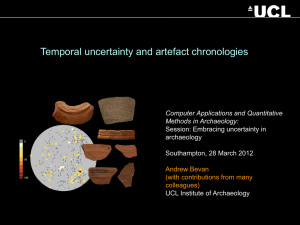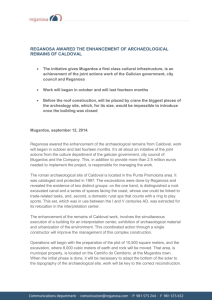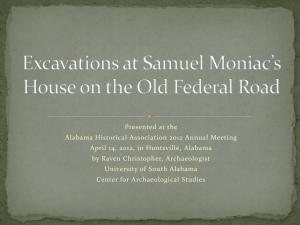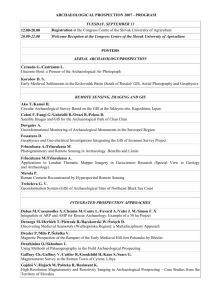The first Romans in Carnuntum 18.06.2014 12:00
advertisement
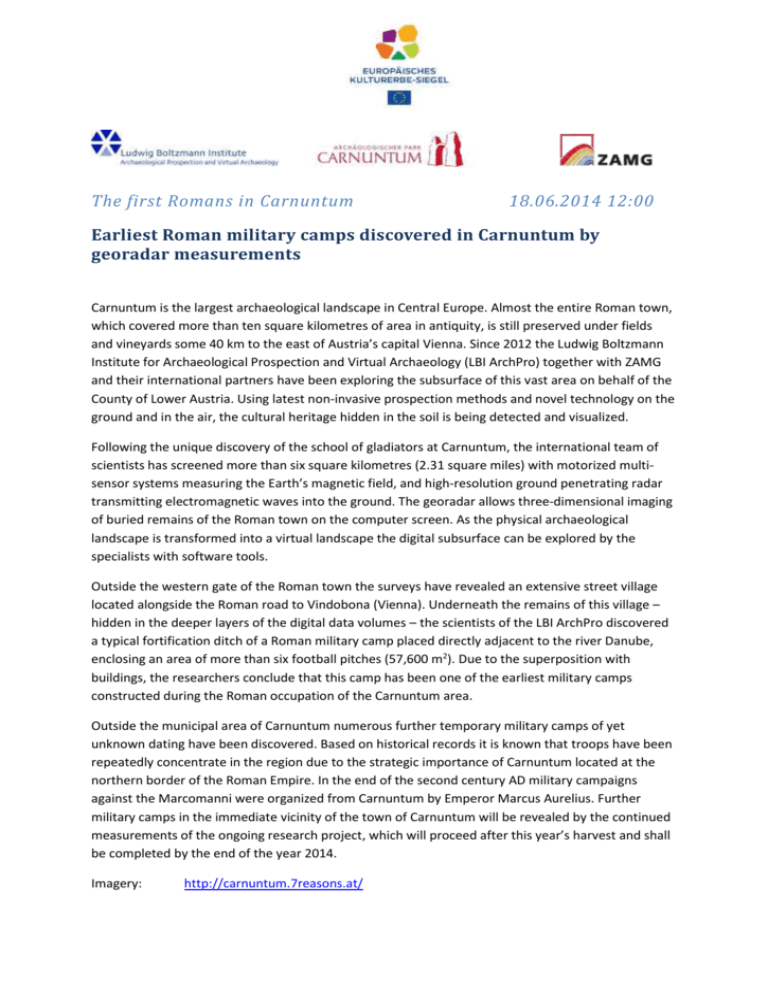
The first Romans in Carnuntum 18.06.2014 12:00 Earliest Roman military camps discovered in Carnuntum by georadar measurements Carnuntum is the largest archaeological landscape in Central Europe. Almost the entire Roman town, which covered more than ten square kilometres of area in antiquity, is still preserved under fields and vineyards some 40 km to the east of Austria’s capital Vienna. Since 2012 the Ludwig Boltzmann Institute for Archaeological Prospection and Virtual Archaeology (LBI ArchPro) together with ZAMG and their international partners have been exploring the subsurface of this vast area on behalf of the County of Lower Austria. Using latest non-invasive prospection methods and novel technology on the ground and in the air, the cultural heritage hidden in the soil is being detected and visualized. Following the unique discovery of the school of gladiators at Carnuntum, the international team of scientists has screened more than six square kilometres (2.31 square miles) with motorized multisensor systems measuring the Earth’s magnetic field, and high-resolution ground penetrating radar transmitting electromagnetic waves into the ground. The georadar allows three-dimensional imaging of buried remains of the Roman town on the computer screen. As the physical archaeological landscape is transformed into a virtual landscape the digital subsurface can be explored by the specialists with software tools. Outside the western gate of the Roman town the surveys have revealed an extensive street village located alongside the Roman road to Vindobona (Vienna). Underneath the remains of this village – hidden in the deeper layers of the digital data volumes – the scientists of the LBI ArchPro discovered a typical fortification ditch of a Roman military camp placed directly adjacent to the river Danube, enclosing an area of more than six football pitches (57,600 m2). Due to the superposition with buildings, the researchers conclude that this camp has been one of the earliest military camps constructed during the Roman occupation of the Carnuntum area. Outside the municipal area of Carnuntum numerous further temporary military camps of yet unknown dating have been discovered. Based on historical records it is known that troops have been repeatedly concentrate in the region due to the strategic importance of Carnuntum located at the northern border of the Roman Empire. In the end of the second century AD military campaigns against the Marcomanni were organized from Carnuntum by Emperor Marcus Aurelius. Further military camps in the immediate vicinity of the town of Carnuntum will be revealed by the continued measurements of the ongoing research project, which will proceed after this year’s harvest and shall be completed by the end of the year 2014. Imagery: http://carnuntum.7reasons.at/ Ludwig Boltzmann Institute for Archaeological Prospection and Virtual Archaeology The Ludwig Boltzmann Institute for Archaeological Prospection and Virtual Archaeology (LBI ArchPro) is dedicated to the development of large-scale, efficiently applicable methods for the non-invasive detection, mapping, visualization and interpretation of archaeological cultural heritage. Within an international network of experts and specialists, the LBI ArchPro conducts archaeological research activities throughout Europe: archaeologists, geophysicists, geometers, computer scientists, physicists, geologists, remote sensing specialists and technicians work within an interdisciplinary research programme using latest prospection technologies permitting the non-destructive exploration of the subsurface. The partner organizations of the Vienna based institute are the Central Institute for Meteorology and Geodynamics (A), the University of Vienna (A), the Vienna University of Technology (A), the Office of the County of Lower Austria (A), Airborne Technologies (A), 7reasons (A), the Römisch-Germanisches Zentralmuseum Mainz (D), the Swedish Central National Heritage Board (S), the IBM Visual and Spatial Technology Centre of the University of Birmingham (UK), the Norwegian Institute for Cultural Heritage Research (N) and Vestfold Fylkeskommune (N). The Ludwig Boltzmann Institute for Archaeological Prospection and Virtual Archaeology is a research institute of the Ludwig Boltzmann Gesellschaft and was founded in 2010 (http://lbg.ac.at). Additional information: http://archpro.lbg.ac.at Contacts Prof. Dr. Wolfgang Neubauer (Direktor LBI ArchPro) Tel: +43 664 6027740304, wolfgang.neubauer@archpro.lbg.ac.at HR Mag. Franz Humer (Land Niederösterreich, Abt. Kunst und Kultur - Archäologischer Park Carnuntum, Landesarchäologe Niederösterreich) Tel: +43 66460499788, franz.humer@noel.gv.at
